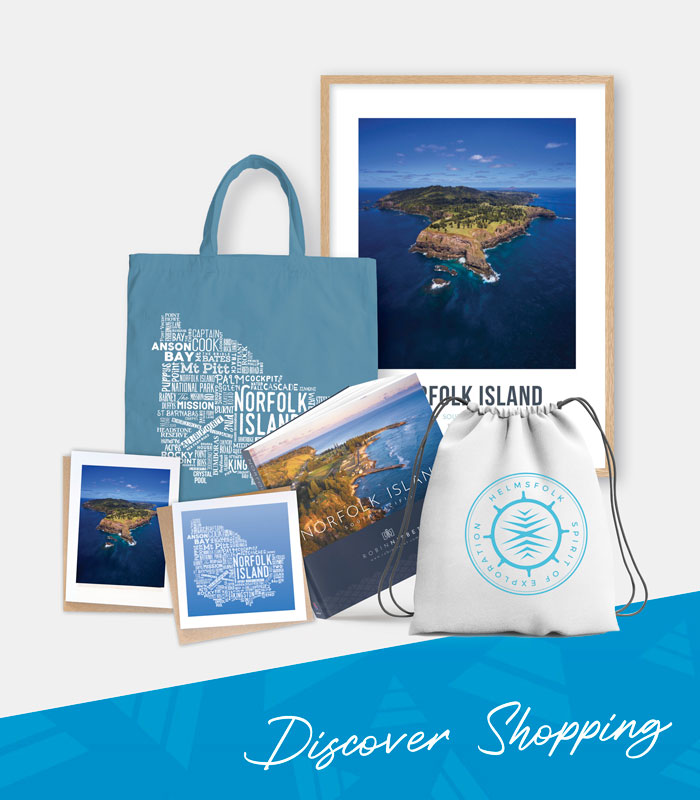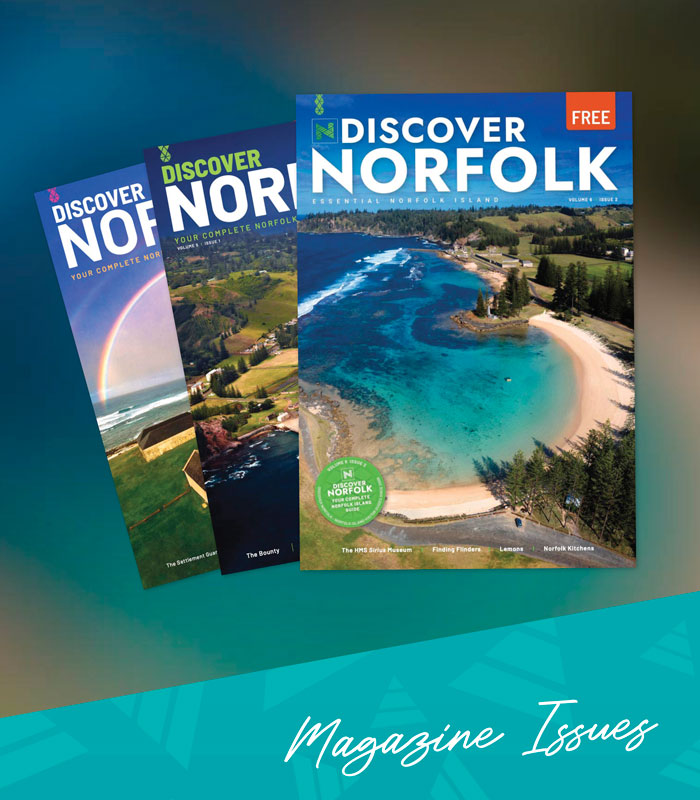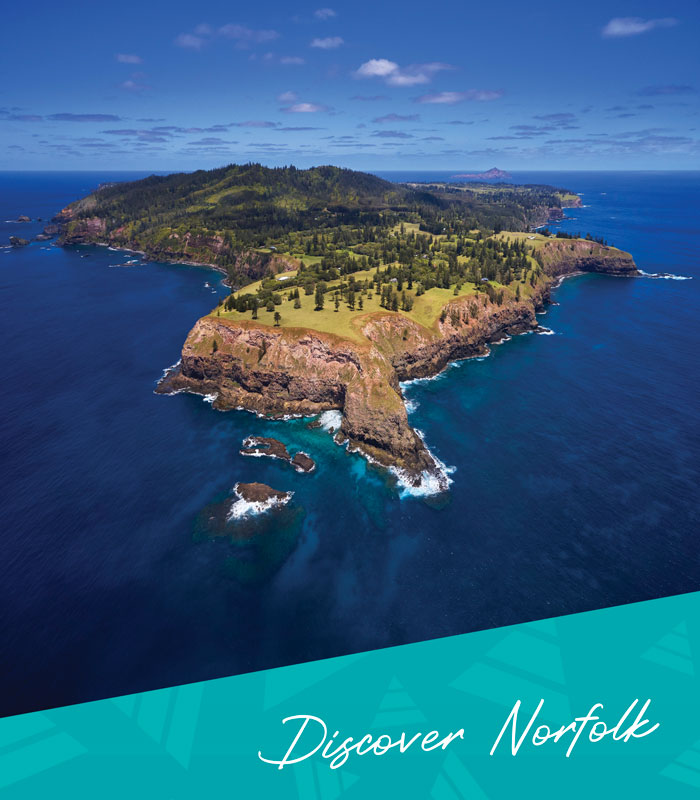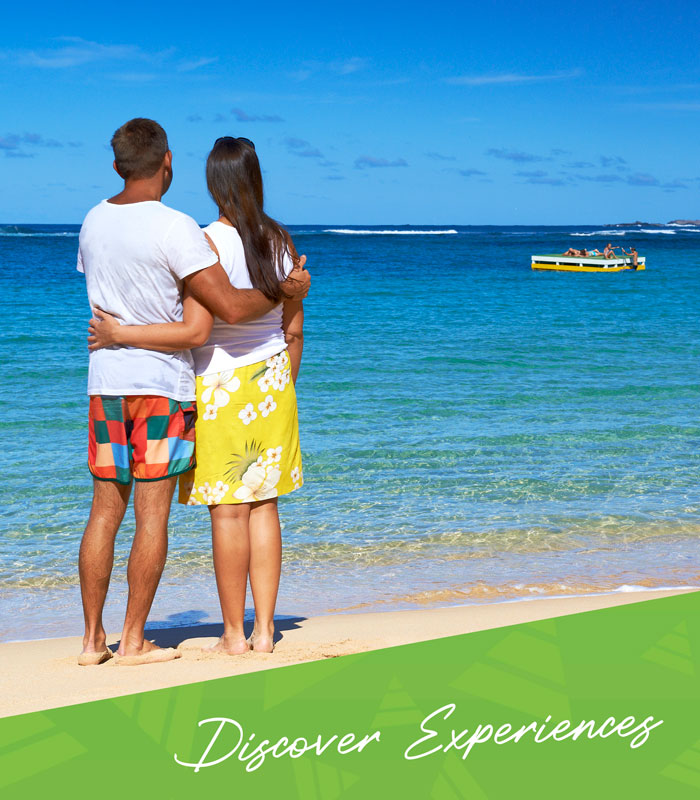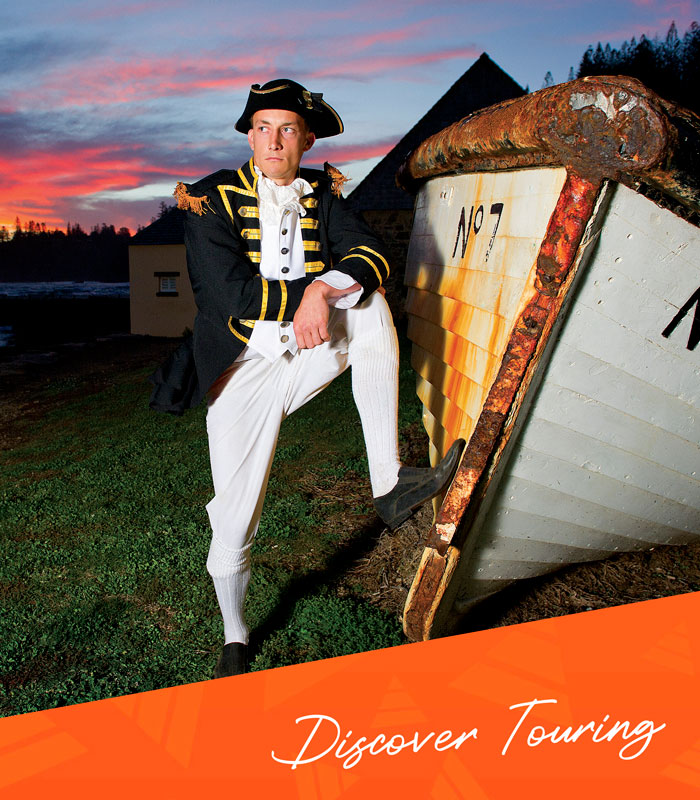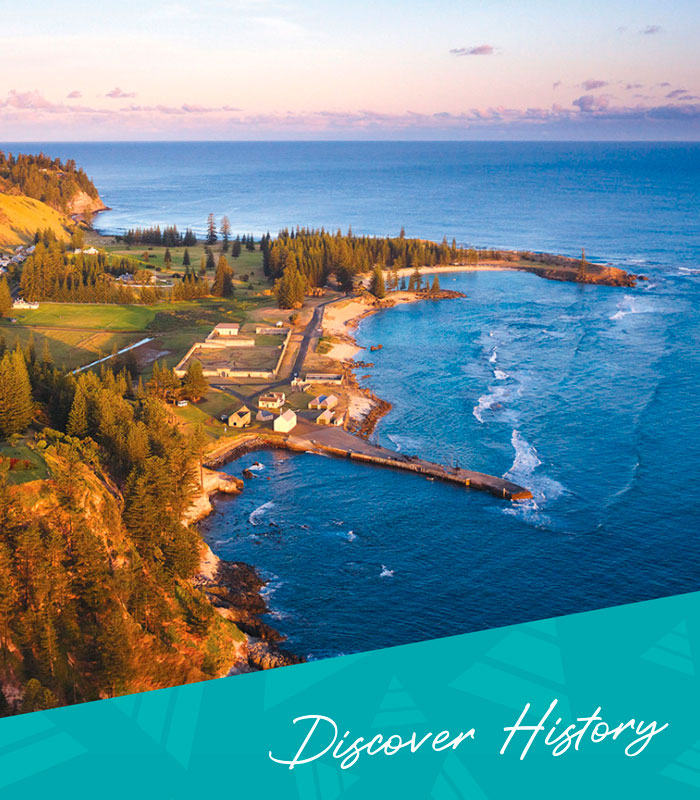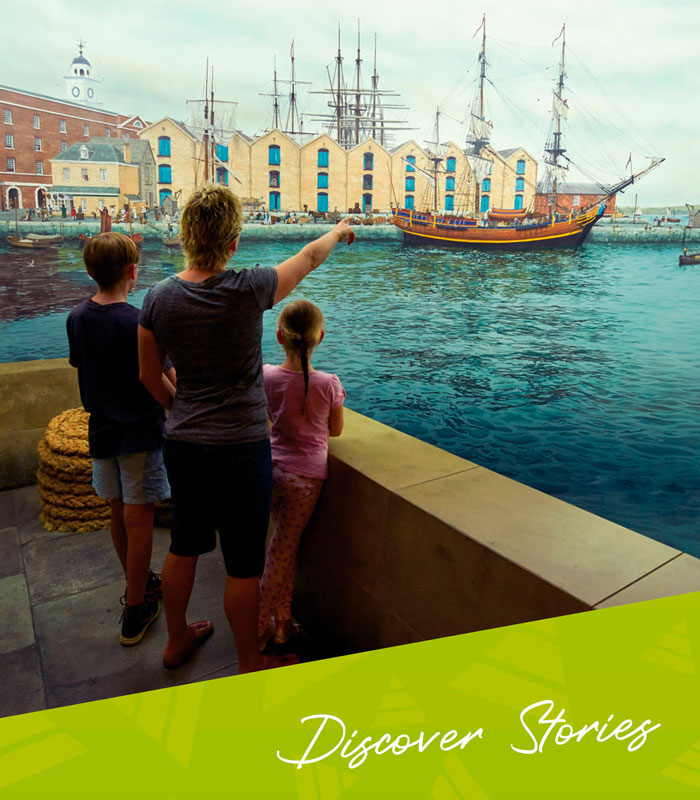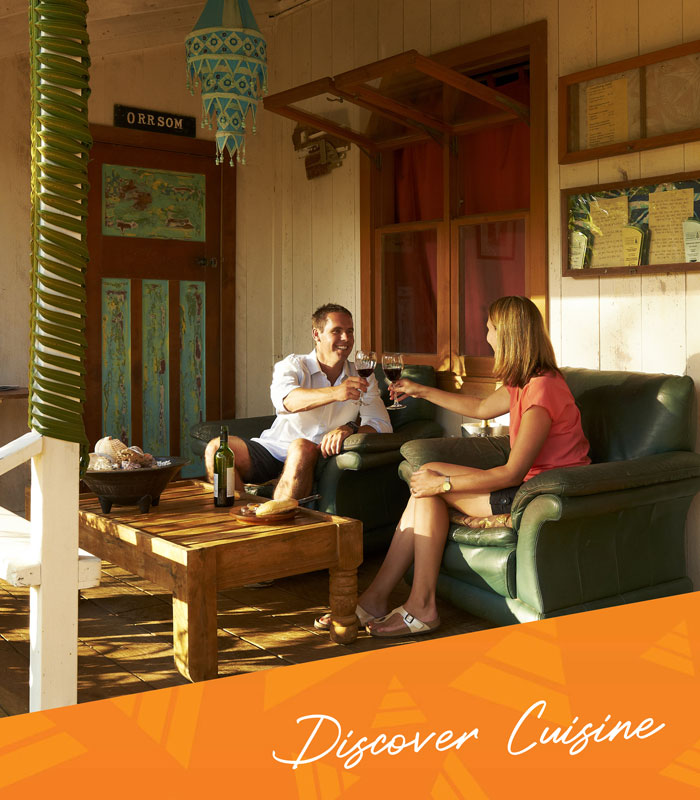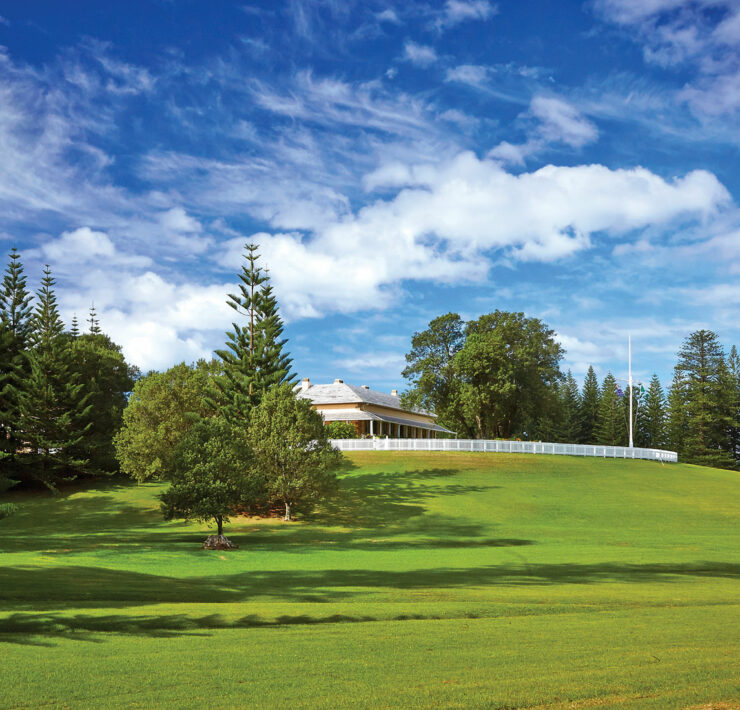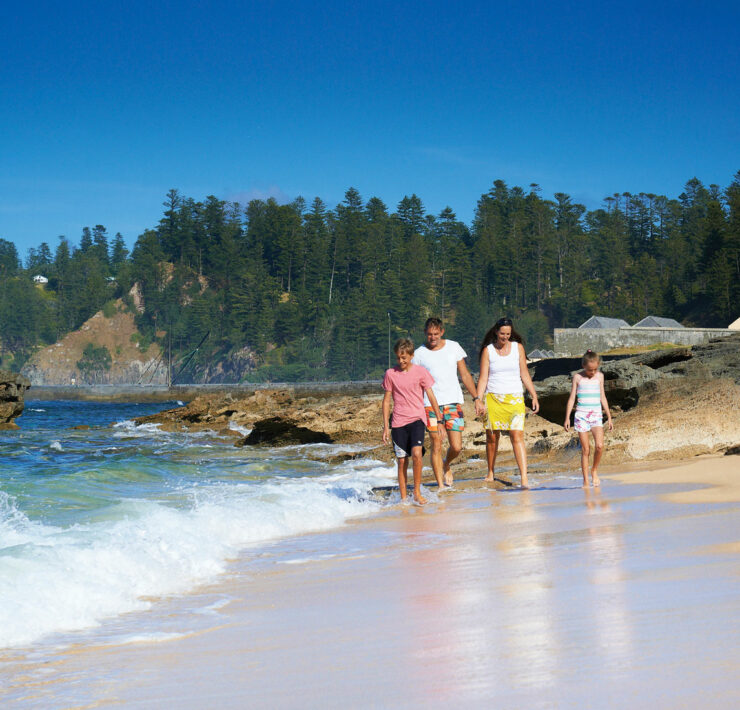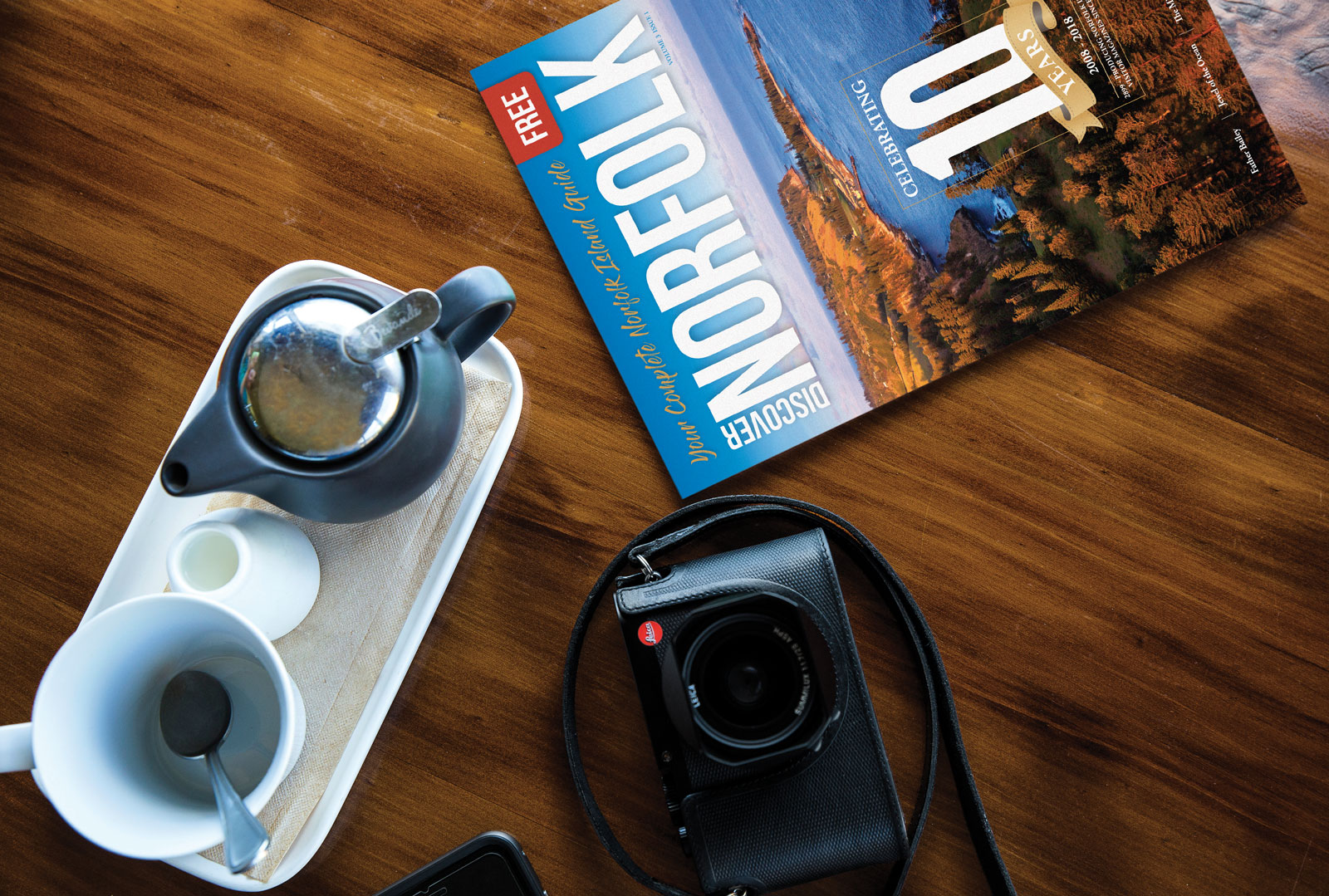
It is remarkable that two tiny islands six thousand kilometres apart share a culture that began with an incident Hollywood later made famous. I am speaking of course about the mutiny on board His Majesty’s Ship Bounty, which led to a small group of mutineers and Polynesian people finding their way to Pitcairn Island. This deserted island had been inhabited by Polynesians some seven hundred years prior to the arrival of these newcomers in 1790; these people became the Pitcairn Islanders. Following a migration to Norfolk Island in 1856, they also became known as the Norfolk Islanders.
The Pitcairn and Norfolk Island culture is unique, and like many cultures, requires a concerted effort by the people to preserve it. The migration from Pitcairn to Norfolk Island was pivotal; contact with a new environment and people impacted on a culture that had developed on the isolated Pitcairn Island for sixty six years.
Further diversification occurred when some of the families chose to return to their Pitcairn home within the first few years and resulted in a community now geographically divided, but forever culturally connected.
Nowadays, Norfolk Island’s population is approximately sixteen hundred, with around forty percent being of Pitcairn descent. On Pitcairn Island, the population is less than fifty people. The permanent population on Pitcairn Island continues to decrease, with islanders migrating mainly to New Zealand. This decreasing and diaspora population, coupled with an ageing demographic, places the island’s material culture at risk. People move from one place to another, taking their belongings with them. Decisions are made to reduce ‘baggage’, so to speak – and treasured objects are left behind or lost, so generational knowledge becomes diluted and forgotten.
With this in mind, the Norfolk Island Museum sought to develop a repository of information on the material culture of Pitcairn Island, supported by the Queensland Museum and funded by the Pacific Development Trust Fund of New Zealand. The ‘Pitcairn Island Material Culture Project’ is now underway with initial inquiries undertaken in Norfolk Island and New Zealand.
So what is material culture? Put simply, it is the relationship between people and things, something that is shaped or formed by human action. Pitcairn’s earliest material culture was left behind by the Polynesians who lived there from c.1000. Over eleven thousand stone implements from this period are now cared for by the Auckland Museum and New Zealand’s Te Papa Tongarewa Museum. The basalt stone from Pitcairn is of the highest quality, resulting in the development of advanced tool technology for that period, and a world class collection of stone artefacts.
Possibly one of the most prized objects brought out from Pitcairn since 1856 is made from a vesicular or aerated basalt stone, fashioned into a functional Polynesian style domestic item known as a ‘yollo’ stone or a food grater. Measuring approximately thirty by twenty centimetres, this rectangular shaped stone is scored across its surface and used to grate or ‘yollo’ breadfruit, banana and yams. This food preparation tool made from Pitcairn Island’s basalt is still used by some. It is highly valued by island families on Norfolk and also by Pitcairn families now living in New Zealand.
Located halfway between Peru and New Zealand, the Pitcairn Island’s group is made up of four islands – Henderson, Oeno, Ducie and Pitcairn, the only inhabited island. It has an area of five square kilometres and is possibly one of the most remotely inhabited islands in the world.
The Pitcairn Islanders material culture is influenced and supported by their philosophy and environment. Objects made from local natural materials are functional and resourceful, or have been created in response to a tourism and collector’s market desiring locally made objects. Contemporary creations are also culturally and or artistically driven.
Wooden carvings exhibiting a unique Pitcairn Island quality and style feature prominently amongst this collection of material. These carvings are shaped from the wood of the commonly named Portia tree (Thespesia populnea), known as the Miro Tree on Pitcairn and throughout Polynesia. Matched with the skills of the Pitcairners, this dense dark reddish to chocolate brown wood is perfect for carving items that are not only beautiful, but collectable. The wood is fashioned into boxes, birds, fish, vases, candlesticks and walking sticks, featuring detailed wooden inlay and simple ‘wood punch’ inscriptions to identify the maker or tell a story.
Replica Bounty ship models are made and fixed on stands, with original Bounty nail or copper pieces attached, raising the value quite considerably. The carved faunal pieces typify the local species of fish, birds and turtles, each one displaying individual appeal and rendering a sense of motion. Not only are these carved wooden objects prized by the island families, and those who purchase them as a holiday souvenir, collectors are selling them through online and higher end auction sites showing a high monetary return.
By 1886 the Pitcairn Islanders had become Seventh Day Adventist Christians and later their missionary ship was named for the island. Among them and arriving at Pitcairn in 1893, was a young pioneering missionary woman named Hattie Andre. Trained in teaching and particularly skilled in craftwork, woodwork and healthy living, she was warmly welcomed. Hattie opened a school for the education of the older students ranging in age from fourteen to thirty nine.
The establishment of Pitcairn’s first Constitution in 1838 had made provision for the compulsory school attendance of all children between the ages of six and sixteen years, a first in British legislative history. The younger students were already being educated by local teacher Rosalind Amelia Young. Contributing to the knowledge of the Islanders on many levels, one of Hattie’s lasting legacies can be seen in the artistic form of dry leaf painting, a craft unique to Pitcairn in the Pacific. The leaves of the Bauhinia Monandra are processed until a delicate lace like membrane remains, then painted with various designs using oils diluted with kerosene to aid this application to such a fine canvas. The finished leaves are generally mounted on black paper, each one bearing the artists name. This practice of signing their works is common on most of their craft and provides us with a true provenance of each piece.
Most objects were usually signed or ‘marked’ with a symbol, for the purpose of identifying personal or family belongings. This identification system originated with the settlers off the Bounty, and developed over the years from a single letter to multiple letters or symbols, mostly due to an increasing population with limited surnames. This ‘mark’ system came to Norfolk Island in 1856, where it gradually ceased to be used. We could compare this early identification system to our current tendency to use nicknames on Norfolk, due to so many here sharing the same surnames.
One small object can tell us multiple stories. A tapered piece of whalebone marked with ‘WXX” and measuring twenty two centimetres in length, used for thatching roofs, is a very special object in the care of a Pitcairn descendant family in New Zealand. This one piece of Pitcairn Island’s material culture provides so much significant information. It reveals to us an association with whaling and a building style. The mark identifies who it belonged to, who used it, and when, while its current location provides us with a case of Pitcairn diaspora in New Zealand.
The association with whaling is also seen on Norfolk through a number of ‘Boston whaler’ rocking chairs. These chairs originally belonged to the women from the whaling ships, put ashore on Pitcairn for a spell whilst the whaling men went off for their catch. This also occurred on Norfolk Island, and their legacy is shown through our cooking and the celebration of Thanksgiving Day on Norfolk.
The practice of weaving remains prominent in both Pitcairn and Norfolk culture today. Islanders produce the most beautiful array of hats, baskets, wearable attire, fans, mats, jewellery and even mobile phone cases! You name it, and they can weave it.
The material culture of Pitcairn and Norfolk has diversified in its isolation. Wood carvings, weaving techniques, tapa making and some foods illustrate this difference. On the other hand, there are still so many shared cultural attributes that have endured and developed, even with this separation. Today and into the future, I believe, we will see further shared cultural qualities between our diaspora people, with the benefits of technology and a desire to remain connected.
The ‘Pitcairn Material Culture Project’ is just a small part of the overall efforts to promote and protect our shared culture; individuals and community groups around the world are actively sharing and preserving our cultural knowledge. The Pier Store Museum in Kingston is where you can read the narrative and see artefacts that tell you more about Pitcairn and Norfolk Island’s cultural heritage. Or look up our website at: www.norfolkislandmuseum.com.au and follow us on Facebook.
____
Image Credit: Robin Nisbet
www.robinnisbet.com
____
Article content disclaimer: Article first published in YourWorld, Volume 06 Issue 02, 2016. Please note that details of specific travel, accommodation and touring options may be outdated. References to people, places and businesses, including operating days and times may be have changed. References to Government structure and Government businesses/entities may no longer be applicable. Please check directly with businesses and/or Government websites directly rather than relying on any information contained in this article before you make travel arrangements.


